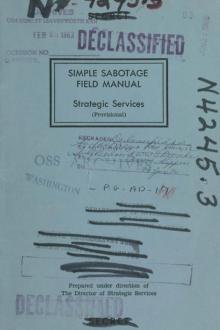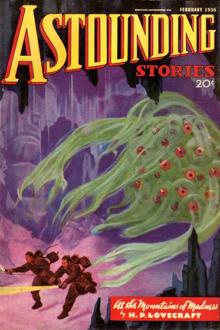Simple Sabotage Field Manual
Book Excerpt
(a) Fires can be started wherever there is an accumulation of inflammable material. Warehouses are obviously the most promising targets but incendiary sabotage need not be confined to them alone.
(1) Whenever possible, arrange to have the fire start after you have gone away. Use a candle and paper, combination, setting it as close as possible to the inflammable material you want to burn: From a sheet of paper, tear a strip three or four centimeters wide and wrap it around the base of the candle two or three times. Twist more sheets of paper into loose ropes and place them around the base of the candle. When the candle flame reaches the encircling strip, it will be ignited and in turn will ignite the surrounding paper. The size, heat, and duration of the resulting flame will depend on how much paper you use and how much of it you can cramp in a small space.
(2) With a flame o
Editor's choice
(view all)Popular books in Government Publication, Post-1930, War, Non-fiction
Readers reviews
It's probably also forgiveable that it doesn't mention video surveillance given that it was written in 1944.
Anyway, since neither of the other reviewers seem to have actually read this pamphlet before reviewing it I thought I'd give it a go. This is an interesting historical document but it's advice ranges from the mildly plausible (using coins to blow fuses) to the absolutely ridiculous (remove toilet paper from lavatories!).
The reason this is interesting is that most of these acts of sabotage existed only in the paranoid minds of secret service types on both sides of the war. There's very little evidence that small scale sabotage of this kind was widespread mainly because the punishments were so severe if caught and the actual effect would be so negligible to the war effort. Despite this the USA was especially fearful of the hidden saboteur and many a clumsy or inept worker was interviewed as a potential spy.
It's great that documents like this are being preserved though I think it's unlikely to be of interest to anyone but historians and perhaps the most disgruntled of employees.
- Upvote (0)
- Downvote (0)
Anyway, I read the book. It has the basic saboteur's info, but it also contains material on how to manipulate people into conducting sabotage for you.
If you ever read Gimpel's "Agent 146", the story of a German spy in America during WWII, you'll start to understand that the front-line spies and saboteurs lead a uniquely depressing lifestyle. As a spy/saboteur, your superiors don't really care about what happens to you, you can't really trust anyone, and you have to convert your mind away from the constructive/creative mode that most aspire to.
As this book (inadvertently) shows, a saboteur is not some creative Robin Hood type so much as someone who fell prey to brainwashing and ended up as a thug doing their runner's bidding.
For example, what benefit do you gain from polluting your own water supply? Here you may be part of a resistance movement supporting a cause kept at bay hundreds of miles away from your location. What good does it do to potentially kill your friends and family while you wait for help?
The most critical thing to do if you find yourself surrounded by the enemy: Get Out. Don't stay and turn yourself into an anti-worker who dreams of comeuppance.
Finally, this book is dated in terms of technology and does not take into account video/audio/physical surveillance.
I know all this from experience; I served as commissar in a very backwards country during the Cold War.
In a computer game.
Some of the simple sabotage techniques:
*Spray cat urine into enemy vehicles
*Release crickets into enemy sleeping quarters
*Extend downward the sides of Hitler's moustache on posters and give him glasses
*Make German potato salad, leave it unrefrigerated for 2 or 3 days, then send to Nazi headquarters with a card saying 'Enjoy!'
*From Sears and Roebuck catalogue, order stylish bra and panty outfits and request delivery to 'Mr. A. Hitler'.

 Free Download
Free Download























